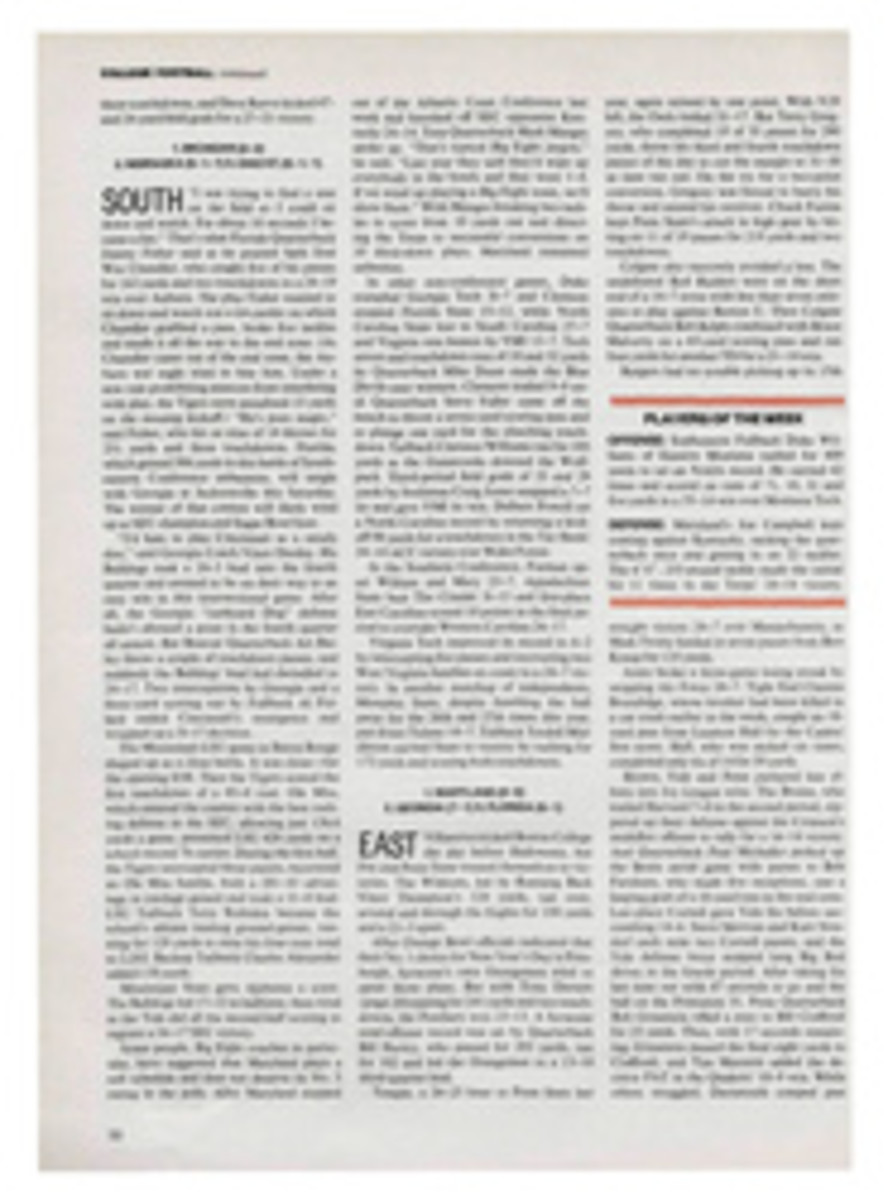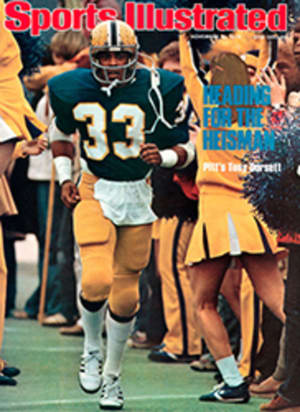
A FALL GUY BECAME A HERO BY SAILING A BALLOON AROUND THE EIFFEL TOWER
In 1901, two years before the Wright brothers made the first heavier-than-air powered flight, Henry Deutsch de la Meurthe of the French Aero Club made an offer that everyone seemed likely to refuse. One hundred thousand francs would go to the first man to fly from the club at St. Cloud to the Eiffel Tower and back in 30 minutes. No one in this era of balloons and gliders had ever flown over a closed course within a time limit, and only one man seemed capable of trying the wind-swept, seven-mile circuit. That man accepted the challenge.
Alberto Santos-Dumont, the son of the wealthiest planter in Brazil, had built and flown the first gasoline-powered airship three years earlier. The dapper little fellow, who always sported a straw hat and often a bright new suit, was a popular figure in Paris, as much admired for his gracious good humor and lack of pretension as for his courage.
His craft was a cigar-shaped, 110-foot Japanese-silk balloon with a 60-foot wooden keel strung beneath it. The keel had a wicker basket in the front, a motor in the center and a propeller at the rear. In the air, the ship was as fragile as a soap bubble.
On the morning of July 13, Santos-Dumont lifted off for an attempt at the prize. He sailed smoothly downwind for 15 minutes and circled the Eiffel Tower without incident, but on the return leg the motor failed and gusting head winds sent the ship careening across the Bois de Boulogne. Unable to regain control, Santos-Dumont ripped the silk, sending the balloon plummeting earthward.
His horrified friends at St. Cloud raced across the Seine to the scene of the wreck, the vast estate of the Baron de Rothschild. They found the basket perched high in an enormous chestnut tree. Santos-Dumont was still in it, lunching from a package that a thoughtful neighbor of the Baron's had sent up. His friends called to him, anxiously inquiring if they could offer any assistance. "Yes," he replied. "I should like to have a glass of beer."
Unfortunately for Santos-Dumont, his first flight was a picnic compared to his second attempt three weeks later. The great crowd gathered at the Eiffel Tower felt that he was assured of victory as he circled the midway point only nine minutes after leaving the Aero Club. They were mistaken. Within seconds of rounding the tower, the balloon developed a hydrogen leak from a faulty gas-release valve, causing the sack to crumple and suspension wires to entangle in the propeller. The entire contraption collapsed and hurtled toward the rooftops of Paris. As it disappeared beneath the skyline, the balloon exploded.
The spectators who rushed to Rue Henri Martin were astounded to find Santos-Dumont in perfect health—at least for the moment. He was 100 feet in the air, precariously perched on the damaged keel, which was wedged between two buildings. As the crowd held its breath, he leaped to a tiny barred window; from there, a fireman's rope pulled him to safety. Deutsch offered to award the prize on the spot if Santos-Dumont would promise to give up, but the airman began work on a new ship that night.
By now Santos-Dumont was an international sensation—the prototype Evel Knievel. His miraculous escapes earned him the nickname Santos-Dismount. Young men copied his bushy mustache and Panama hat, and a correspondent for The New York Times cabled home that "his ballooning experiments seem to have transformed half the nation into amateur aeronauts." When Santos-Dumont made his third ascent, on Oct. 19, the Aero Club grounds and the Paris streets were mobbed. As he floated overhead, resplendent in checked knickerbockers, men raised their derby hats on canes and women waved their scarves.
The flight proceeded uneventfully until Santos-Dumont was within sight of St. Cloud on the return leg. Then the motor sputtered and died. Suspended above the packed stands of the Auteuil racecourse, he tightroped his way along the keel, adjusted the carburetor and restarted the engine. Safely back in the basket, he feverishly shifted ballast and worked his guide rope to compensate for the treacherous wind. He crossed the finish line with 30 seconds to spare, then glided grandly around the field in history's first airborne victory lap.
After Santos-Dumont landed, the cheering crowd pelted him with flowers. But one problem remained; although Santos-Dumont was safely on the ground, the disposition of the prize was still up in the air. While Deutsch would have been delighted to part with his money, the Aero Club judges withheld it, contending that the pilot had not touched land within the time limit. Santos-Dumont was bitter, saying that he had intended to divide the prize between his mechanics and the poor people of Paris. After weeks of public protests, including an attempt by beggars to stone the club's facilities, the judges reversed their decision, and the money was awarded.
Santos-Dumont continued to delight his admirers with dramatic stunts in the ensuing years. During one exhibition, his motor caught fire, and he beat out the flames with his straw hat. Smiling down at the crowd, he waved one white-gloved hand, lifted the soot-covered Panama and serenely flew on. That same summer he parked a 40-foot dirigible on the Champs Élysées in front of his apartment, while he stepped inside "to take a small cup of coffee."
Inspired by the Wright brothers' accomplishments at Kitty Hawk in 1903, Santos-Dumont built a T-shaped, single-engine airplane that resembled a collection of box kites. The machine's lift and balance characteristics were tested by having a progress-minded jackass pull it into the air. In 1906 this plane made the first heavier-than-air flight in Europe, but it was cursed with a serious design flaw—it flew tail first. When a similar model flipped Santos-Dumont on his head, he limped back to the drawing board. Subsequent projects included a seaplane that skipped along the Seine like a water bug and a model helicopter that failed to produce anything more than a draft in the hangar.
Santos-Dumont also developed the graceful Dragonfly, a light, inexpensive monoplane he envisioned as aviation's answer to the Model T Ford. It was quickly outmoded by faster aircraft, and in 1909 he withdrew to his country estate. There would be no more prizes, only memories of the daredevil aeronautics and heart-stopping falls. Flight would become commonplace, partly because Santos-Dumont had been willing to experience all the danger and glory of aviation's beginning.

